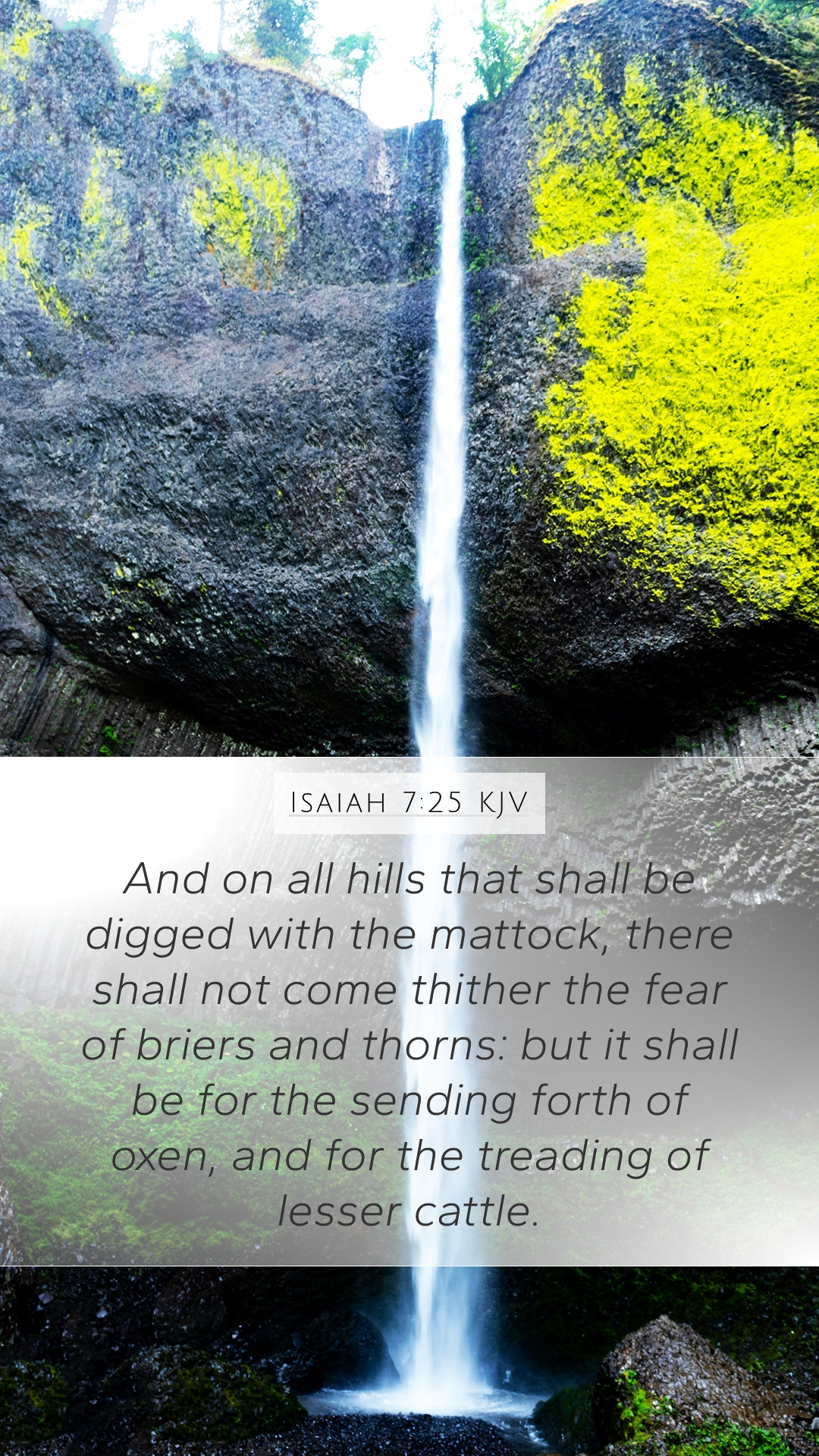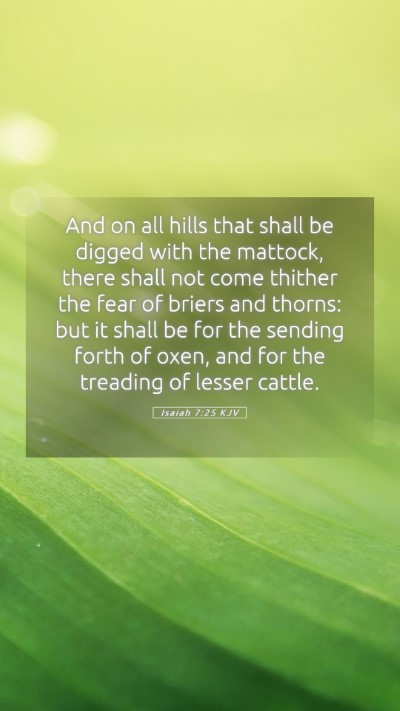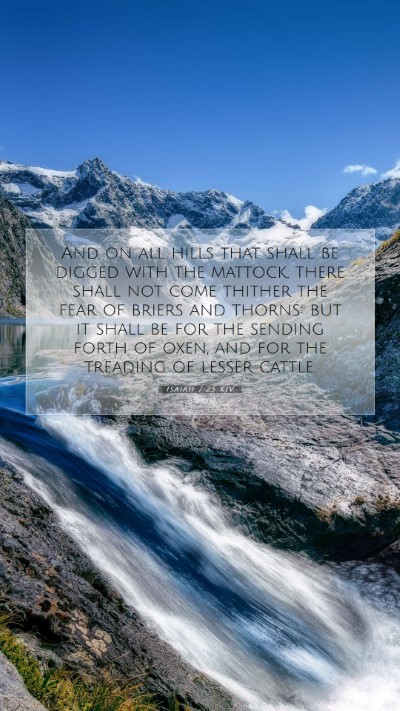Understanding Isaiah 7:25
Isaiah 7:25 states: "And on all hills that shall be digged with the mattock, there shall not come there the fear of briers and thorns: but it shall be for the sending forth of oxen, and for the treading of lesser cattle." This verse is situated within a prophetic context, emphasizing a time of judgment and the resultant transformation of the land.
Contextual Background
The passage comes from the Book of Isaiah, which addresses both the Northern and Southern Kingdoms of Israel during a pivotal period. It reflects God's message to a people in distress, to remind them of His sovereignty amid chaos.
Commentary Insights
- Matthew Henry:
Henry explains that the digging of hills reflects a time of cultivation and renewal. In a contrast to fear and defensiveness, the imagery of oxen suggests a return to peace and productivity. The absence of "briers and thorns" symbolizes a removal of obstacles and adversaries, highlighting a hopeful future.
- Albert Barnes:
Barnes interprets the verse as a metaphor for the agricultural prosperity that will replace the desolation previously experienced due to invading armies. It suggests that where once there was threat and danger, there will be fruitful labor and sustenance, symbolizing God's restoration of the land and His people.
- Adam Clarke:
Clarke emphasizes the significance of the hills mentioned in the verse. He notes that the transformation of these hills, once feared for their roughness and thorns, into fertile grounds reflects a divine blessing upon the land. Clarke highlights that the reference to oxen indicates a time when the land can again be tended effectively.
Thematic Elements
This verse introduces several significant themes:
- Restoration: The transition from fear to productivity represents the restoration of both the land and spiritual state of the people.
- Divine Sovereignty: This passage underscores God's control over the events and the ultimate good He brings out of calamity.
- Hopefulness: The imagery portrays a future where labor is met with prosperity rather than strife, indicating a hopeful direction amidst present troubles.
Applying the Message
When considering the meaning of Isaiah 7:25, it is vital to reflect on its implications for our lives today. It encourages believers to trust in God's ability to restore and renew even the most desolate situations. This passage serves as a reminder that after trials and tribulations, God’s promise of peace and productivity can prevail.
Cross References
This verse can be related to several other scripture passages that echo similar themes of restoration and divine promise:
- Jeremiah 29:11: God's plans for peace and hope.
- Ezekiel 36:34-35: The transformation of the land into a place of plenty.
- Isaiah 35:1-2: The flourishing of the wilderness and joy in transformation.
Conclusion
In summary, Isaiah 7:25 is a profound verse that encapsulates God's promise of restoration, the end of fear, and the return to fruitful living. Through the lens of various public domain commentaries, this verse provides rich insights for Bible study groups, enhancing our Bible study insights and deepening our Biblical exegesis. Applying this scripture in our lives, we can find encouragement in the midst of challenges, highlighted by the hope that God's renewing power can transform fear into fruitfulness.


